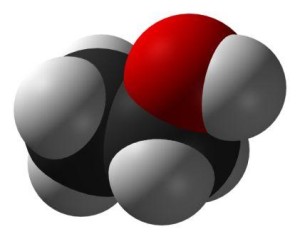Ethanol Production without plants

Stanford University scientists have stumbled upon a new revolutionary method to produce ethanol from carbon monoxide (CO). This could pave the way for eco-friendly fuel production that can serve as an alternative to conventional ethanol that is usually produced from corn and other agricultural crops, as per reports by Stanford News Service. The results were published in the journal Nature.
“We have discovered the first metal catalyst that can produce appreciable amounts of ethanol from carbon monoxide at room temperature and pressure – a notoriously difficult electrochemical reaction,” said Matthew Kanan, an assistant professor of chemistry at Stanford and co-author of the Nature study.
Ethanol at present for fuel consumption is produced by fermentation of agricultural crops such as corn or sugarcane. This has been criticised especially by developing countries that have often called the practise of diverting lands for producing fuel producing crops a crime against humanity. But this new method requires no crop material and is therefore a better alternative to the current practise.
Kanan and student Li had created a novel electrode made of oxide-derived copper. They used the term “oxide-derived” because the metallic electrode was produced from copper oxide.
“Conventional copper electrodes consist of individual nanoparticles that just sit on top of each other,” Kanan said. “Oxide-derived copper, on the other hand, is made of copper nanocrystals that are all linked together in a continuous network with well-defined grain boundaries. The process of transforming copper oxide into metallic copper creates the network of nanocrystals.”
They constructed an electrochemical cell which on voltage application on cvathode that uses oxide-derived copper produced ethanol and acetate with 57 percent faradaic efficiency.
“In the experiment, Kanan and Li found that a slightly altered oxide-derived copper catalyst produced propanol with 10 percent efficiency. The team is working to improve the yield for propanol by further tuning the catalyst’s structure.”
The version if scaled up can lead to higher efficiency cells that can be powered by renewable sources of energy and in the process will become sustainable and carbon neutral.
“Prior to our study, there was a sense that no catalyst could efficiently reduce carbon monoxide to a liquid. We have a solution to this problem that’s made of copper, which is cheap and abundant. We hope our results inspire other people to work on our system or develop a new catalyst that converts carbon monoxide to fuel,” said Kanan.
Reference-
http://news.stanford.edu/pr/2014/pr-ethanol-without-plants-040914.html

